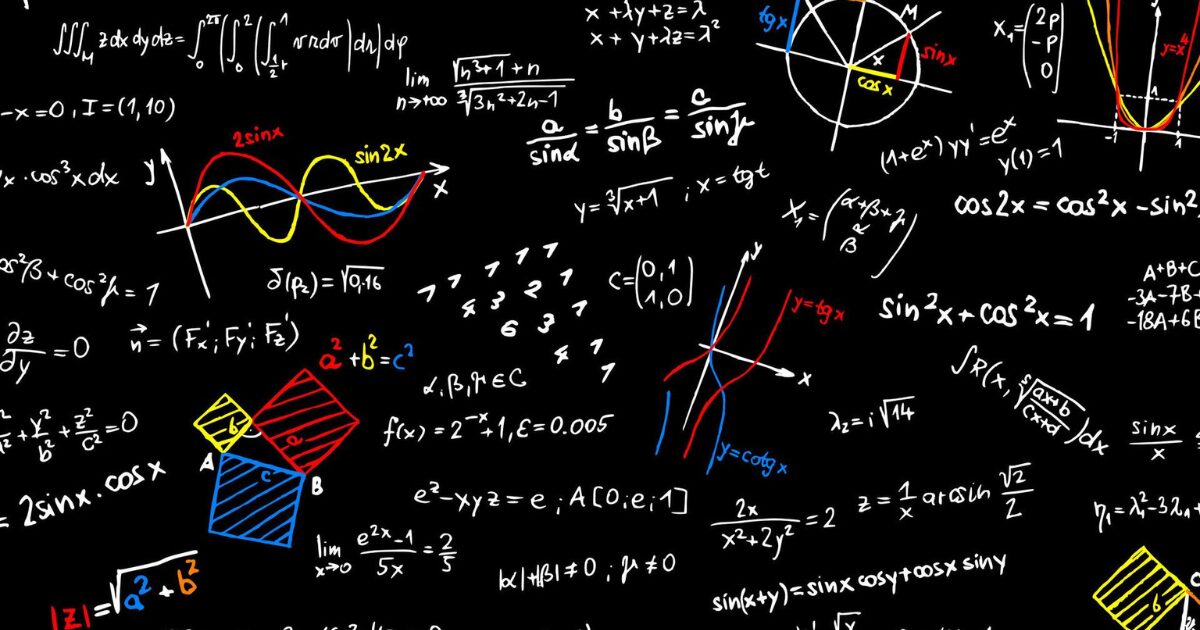Betting Odds Math
In the world of sports betting, understanding odds is crucial for making informed and profitable decisions. Betting odds represent the probability of an event occurring and determine the potential payout for a winning bet.
However, for many bettors, the mathematics behind odds can seem daunting and confusing. This article aims to demystify betting odds math, providing a comprehensive guide to understanding and interpreting the various types of odds used in sports betting.
Throughout this article, we will explore the different formats of betting odds, including decimal, fractional, and moneyline or American odds.
We will delve into the calculations and formulas required to convert between these formats, as well as methods for determining potential payouts and implied probabilities.
By mastering these fundamental concepts, you will gain a deeper understanding of the mathematics behind betting odds and be better equipped to make strategic betting decisions.
Basics of Betting Odds
Types of Betting Odds
In the world of sports betting, odds can be represented in three main formats: decimal odds, fractional odds, and moneyline or American odds. Each format serves a specific purpose and is commonly used by different bookmakers or betting platforms.
1. Decimal Odds: Decimal odds are straightforward and represent the total payout for a winning bet, including the original stake. For example, odds of 2.50 indicate that a successful $1 bet would return $2.50 (the original $1 stake plus $1.50 in winnings).
2. Fractional Odds: Fractional odds are commonly used in the United Kingdom and represent the potential profit relative to the stake. For instance, odds of 3/1 mean that for every $1 wagered, the potential profit is $3 if the bet is successful.
3. Moneyline or American Odds: Moneyline odds are popular in the United States and are represented as either positive or negative numbers.
Positive odds indicate the potential profit for a $100 bet (e.g., +200 means a $200 profit for a $100 stake), while negative odds represent the amount needed to win $100 (e.g., -150 means you need to bet $150 to win $100).
How Odds Represent Probability
Betting odds are directly related to the implied probability of an event occurring. The higher the odds, the lower the implied probability, and vice versa.
Understanding this relationship is crucial for assessing the potential value of a bet and making informed decisions.
Implied probability is calculated by dividing a constant value (usually 1 or 100) by the odds plus the constant value. For example, decimal odds of 2.50 have an implied probability of 1 / (2.50 + 1) = 0.286 or 28.6%.
Similarly, fractional odds of 3/1 have an implied probability of 1 / (3 + 1) = 0.25 or 25%.
Understanding Decimal Odds
Calculation and Interpretation
Decimal odds are straightforward and easy to understand. To calculate the potential winnings for a decimal odds bet, you simply multiply your stake by the odds value and subtract the stake amount.
For example, if you bet $10 on odds of 2.50, your potential winnings would be:
Potential Winnings = (Stake × Decimal Odds) - Stake
= ($10 × 2.50) - $10
= $25 - $10
= $15
In this case, a successful $10 bet at odds of 2.50 would result in a total return of $25, including the original $10 stake and $15 in winnings.
Advantages of Decimal Odds
Decimal odds are widely used because of their simplicity and ease of understanding. They clearly represent the total potential payout, including the original stake, making calculations straightforward.
Additionally, decimal odds are flexible and can be used to calculate potential payouts for any stake amount, without the need for conversion.

Deciphering Fractional Odds
Conversion to Decimal Odds
While fractional odds are common in certain regions, it's often necessary to convert them to decimal odds for easier calculations.
To convert fractional odds to decimal odds, you divide the numerator by the denominator and add 1.
For example, fractional odds of 3/1 would be converted as follows:
Decimal Odds = (Numerator / Denominator) + 1
= (3 / 1) + 1
= 4.00
This means that fractional odds of 3/1 are equivalent to decimal odds of 4.00.
Interpreting Fractional Odds
Fractional odds represent the potential profit relative to the stake. The numerator represents the potential profit, while the denominator represents the stake amount.
For example, odds of 3/1 indicate that for every $1 wagered, the potential profit is $3 if the bet is successful.
To calculate the potential profit and total return for fractional odds, you multiply the stake by the numerator and divide by the denominator.
For instance, if you bet $10 on odds of 3/1, your potential profit and total return would be:
Potential Profit = (Stake × Numerator) / Denominator
= ($10 × 3) / 1
= $30
Total Return = Stake + Potential Profit
= $10 + $30
= $40
In this case, a successful $10 bet at odds of 3/1 would result in a potential profit of $30 and a total return of $40 (including the original $10 stake).
Grasping Moneyline or American Odds
Positive vs. Negative Moneyline Odds
Moneyline odds are represented as either positive or negative numbers, with each indicating a different interpretation.
Positive Moneyline Odds: Positive odds represent the potential profit for a $100 bet. For example, odds of +200 indicate that a successful $100 bet would result in a $200 profit.
To calculate the potential profit for any stake amount, you divide the stake by 100 and multiply by the positive odds value. For instance, a $10 bet at odds of +200 would have a potential profit of ($10 / 100) × 200 = $20.
Negative Moneyline Odds: Negative odds represent the amount needed to win $100. For example, odds of -150 mean you would need to bet $150 to win $100 in profit.
To calculate the potential profit for any stake amount, you divide the stake by the negative odds value (without the minus sign) and multiply by 100. For instance, a $150 bet at odds of -150 would have a potential profit of ($150 / 150) × 100 = $100.
Converting Moneyline Odds to Decimal or Fractional
To convert moneyline odds to decimal or fractional formats, you can use the following formulas:
Decimal Odds = Positive Odds / 100 + 1
Decimal Odds = 100 / (100 - Negative Odds)
Fractional Odds (Positive) = Positive Odds / 100
Fractional Odds (Negative) = 100 / Negative Odds
For example, moneyline odds of +200 would convert to decimal odds of 3.00 (200/100 + 1) or fractional odds of 2/1 (200/100). Conversely, moneyline odds of -150 would convert to decimal odds of 1.67 (100 / (100 - 150)) or fractional odds of 2/3 (100 / 150).
Betting Odds Math: Advanced Concepts
Probability and Expected Value (EV)
In the context of sports betting, understanding probability and expected value (EV) is crucial for making informed decisions and maximizing long term profitability.
Probability represents the likelihood of an event occurring, and it can be calculated from betting odds using the formulas discussed earlier.
For example, if an event has decimal odds of 2.50, its implied probability is 1 / (2.50 + 1) = 0.286 or 28.6%.
Expected Value (EV) is a mathematical concept that helps determine the potential long-term profitability of a bet. It considers the potential payout, the probability of winning, and the stake amount.
The formula for calculating EV is:
EV = (Potential Payout × Probability of Winning) - Stake
A positive EV indicates a profitable bet in the long run, while a negative EV suggests an unprofitable bet. By calculating and comparing the EV of different betting opportunities, you can identify the most favorable bets and make informed decisions.
Odds Comparison and Finding Value Bets
One of the keys to successful sports betting is identifying value bets, where the odds offered by bookmakers or betting exchanges are more favorable than the true probability of the event occurring.
To find these value opportunities, you must compare odds across different bookmakers and analyze the discrepancies.
Here are some techniques for comparing odds and finding value bets:
1. Odds Conversion: Convert the odds from different bookmakers into a common format (e.g., decimal odds) to allow for direct comparison.
2. Implied Probability Calculation: Calculate the implied probability for each set of odds using the formulas discussed earlier. This will help you identify discrepancies between the bookmakers' assessments and your own assessment of the event's likelihood.
3. Odds Shopping: Regularly compare odds across multiple bookmakers and betting exchanges. Look for significant differences in the odds offered for the same event, as this can indicate a potential value opportunity.
4. Line Monitoring: Monitor odds movements over time and be prepared to act quickly when value opportunities arise due to line movements or shifts in public opinion.
5. Specialized Odds Comparison Tools: Utilize online odds comparison tools or services that aggregate odds from multiple bookmakers, making it easier to identify value bets and discrepancies in the market.
By mastering these techniques, you can develop a keen eye for identifying value bets and potentially gain an edge in the long run.
Practical Tips for Using Betting Odds Math
Bankroll Management
Effective bankroll management is crucial for long term success in sports betting. Betting odds math plays a vital role in determining appropriate bet sizes and managing your bankroll responsibly.
One common approach is to allocate a fixed percentage of your bankroll for each bet, with the percentage varying based on the perceived value of the bet. For example, you may choose to risk 1-2% of your bankroll on standard bets and up to 5% on bets with significant value.
Alternatively, you can use the Kelly Criterion, a mathematical formula that calculates the optimal bet size based on the odds and your perceived edge or advantage in the market. The Kelly Criterion helps maximize your long term growth while minimizing the risk of ruin.
Risk Assessment and Mitigation
Betting odds math can also help you assess and mitigate the risk associated with your bets. By understanding implied probabilities and expected values, you can make informed decisions about which bets to place and which to avoid.
Additionally, you can employ risk management strategies, such as hedging or arbitrage betting, to minimize potential losses or lock in profits.
These strategies involve placing multiple bets on different outcomes of the same event, using the odds differences to create a guaranteed profit or reduce the overall risk.
Remember, successful sports betting is not just about picking winners but also about managing risk effectively and making decisions based on sound mathematical principles.
Conclusion
Understanding betting odds math is a crucial skill for any serious sports bettor. By mastering the various formats of odds, their conversions, and the underlying mathematical concepts, you'll be better equipped to evaluate betting opportunities, manage your bankroll, and ultimately increase your chances of long term profitability.
This article has provided a comprehensive overview of decimal, fractional, and moneyline odds, as well as techniques for calculating potential payouts, implied probabilities, and expected values.
Additionally, we've explored advanced concepts like odds comparison, value bet identification, and risk management strategies.
Armed with this knowledge, you can approach sports betting with a more analytical and informed mindset.
Remember to practice responsible betting, manage your bankroll effectively, and continuously refine your skills by applying the principles of betting odds math.

QSB Tipsters at a 90% discounted price
We all know that football is a great sport to bet on, but it can be hard to find the best bets. That’s where we come in! Our team of tipsters are dedicated to finding you the best value bets each week so you can make consistent profits on the betting exchange.
With our subscription service, you will gain access to our tipsters area which contains over 20+ selections each week for long term profit on the betting exchange. You will also have access to advice from our experienced tipsters who have been betting and trading successfully for years.
If you want consistent selections each week, then our subscription is definitely for you! Get started today within our subscription section!



